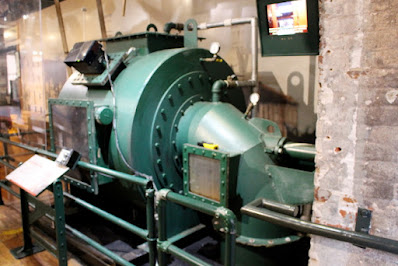Branchville (population 998), South Carolina, received its name because it is the location of the "World's Oldest Railroad Junction." The railroad junction was built in 1828. Branchville is also the location of the "First Scheduled Train in the United States," which ran from Branchville to Charleston.
As we passed through Bamberg (population 3,076), there was a large topiary caterpillar beside the highway and a short distance away was a nice veterans memorial.
A short distance down the road was the community of Denmark (population 3,186). In case anyone passing through Denmark is wondering if it is "A Good Place to Be," there is a sign on the edge of town that gives seven reasons why people are "Welcome." The town's motto is "Stop for a visit, stay for your life!"
Beside the sign was a Palmetto Tree, the South Carolina State Tree. I do not recall ever seeing a Palmetto Tree before, so I had include a picture of the tree.
Blackville's historic courthouse was demolished several years ago, then the town's Old Railroad Depot was moved to Courthouse Square. The Depot itself is quite picturesque and now houses the Blackville Branch Library.
About three miles north of Blackville (population 1,932) is God's Acre Healing Springs. For centuries people have been coming to the Springs to "seek solace, spiritual renewal, and the purported health benefits of its crystal-clear waters." I filled my bottle and partook of the water, but I did not feel any change. However, if I had not partaken of the water I may have come down with some illness. Who knows?
We stopped by the Aiken Visitor Center and Train Museum, but all I could think about was the poor horse standing in the front yard. He looked like he needed some water from God's Acre Healing Springs. It was cold and had been raining all day, so maybe he was just cold and blue.
The Augusta Canal National Heritage Area in Augusta, Georgia, is an all-day destination; but we did not have all day, so we just visited the Discovery Center.
Augusta Canal was completed in 1845 to provide power for textile manufacturing facilities, transport raw materials and finished goods, and to provide municipal water for the city. It is the only canal in the United States that has been continually used for its original purposes.
The Discovery Center is located in the original Enterprise Mill and contains exhibits explaining how the canal was built and how it works. Water from the Savannah River is diverted into headgates on the canal, then the water flows 13 miles through the city of Augusta. Along the length of the canal water is divided into three levels before it is diverted to various users. Water in the canal not used for power or municipal purposes is returned to the river at the end of the 13 miles.
Boat tours are now available on the canal and the adjacent towpath is used as a hiking trail and bike path. It was raining the entire time that we were there, so we did not partake of any outdoor activities.
Oliver Hardy was born January 18, 1892, in Harlem (population 3,571), Georgia; thus, the location of the Laurel and Hardy Museum. Since it was raining outside, this was a great stop. Actually, it would be a great place to stop even if it was not raining.
A member of the museum staff told us about the museum and then offered to show us a movie short in their theater. At the risk of telling my age, I remembered seeing a Laurel and Hardy movie when I was a kid.
While we were touring the museum there happened to be a movie short running in the theater (I don't remember the name of the movie), so we just watched the rest of the movie. I had forgotten how funny they were with their slapstick comedy. It was nice to have a good laugh on a rainy day.
Greensboro (3,648), Georgia, is located about half way between Augusta and Atlanta. A sign stated that this is the city that Mickey Mantle moved to after retiring from the New York Yankees baseball team.
Located around the courthouse are various statues, monuments, a jail, and the Old Gaol. The Old Gaol is designed after European bastilles used a hundred years ago to house and punish prisoners. Published literature states: "Prisoners in the cells could be chained to the walls. They were given a bed of straw, a tin bucket for a toilet and a candle. There was no other light, no heat and no ventilation. People arrested for non-violent crimes were sometimes put in the upstairs room where they at least had light."
The building walls are two-feet-thick granite and the second-story floor contains a trap door in the floor where prisoners were hanged. While standing on the trap door, a guard pulled a lever that released the door and the prisoner fell to his destiny.













































No comments:
Post a Comment